Intelligent Planning
System
Demand and Supply planning optimization with scenario planning and what-if analysis
d-one plan enables you to align all business functions, to execute with speed on one single committed plan: transparency, reliability and agility.
D-ONE drives your company’s performance to the next level



Demand management
Production and Capacity Planning
Business Intelligence:
Cockpit & Analytics
Improve forecast predictions and optimize supply chain planning efficiency with our technology core made of advanced Machine Learning algorithms.
Optimize inventory levels, reduce costs and ensure on-time delivery. Identify potential bottlenecks and prioritize orders taking into account all relevant constraints..
Enable better visibility on operations and financial forecasting. Provides intelligent insights to facilitate decision-making and unlock new opportunities.

Demand management
Improve forecast predictions and optimize supply chain planning efficiency with our technology core made of advanced Machine Learning algorithms.

Production and Capacity Planning
Optimize inventory levels, reduce costs and ensure on-time delivery. Identify potential bottlenecks and prioritize orders taking into account all relevant constraints..

Business Intelligence:
Cockpit & Analytics
Enable better visibility on operations and financial forecasting. Provides intelligent insights to facilitate decision-making and unlock new opportunities.
All the planning processes can be operated with the desired
granularity: daily, weekly and monthly
D-one capabilities are add-ons
to your ERP
They are natively integrated and allow you to develop
the factory of the future.
Demand
Management
Production and
Capacity Planning
Business Intelligence:
Cockpit & Analytics
Demand management
Sales Forecasting with Machine Learning
Improving sales forecasting and reducing forecast error has become a strategic imperative for businesses irrespective of industry. Sales and demand Forecasting with machine learning provides the best possible system to improve forecast predictions and optimize supply chain planning automatically.
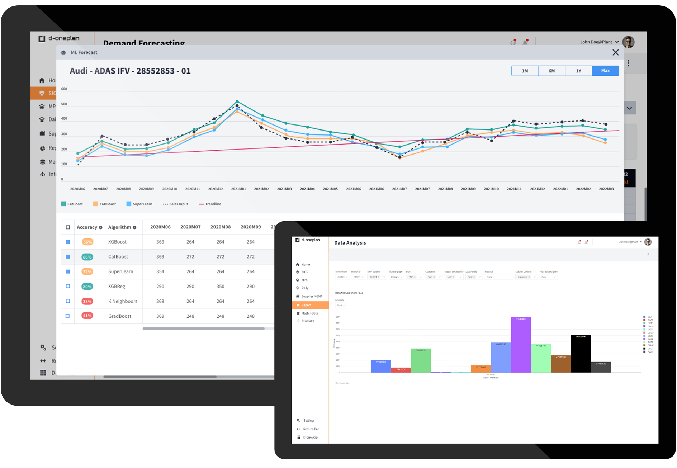

Better
Forecasting

Increased
Profitability

Lower
Inventory

Increased
Service Level
Demand management
Machine Learning based forecast (use case)
It means large volumes of SKUs can be easily managed and processed with very high levels of accuracy through MAPE & Bias self-learning. The improved data means the most appropriate models can be selected and the most beneficial algorithms assigned.
Use case: we applied to B2B & B2C business. Used 2 years historical data to predict the future demand:


Accuracy
on B2C

MAPE
on B2C

Accuracy
on B2B

ML
Algorithms
Demand management
Demand Planning with Machine Learning (Demand Sensing)
Demand planning is the very foundation of the S&OP process. Collaborative demand planning takes reliable forecasting to the next level by also including key input from sales team.
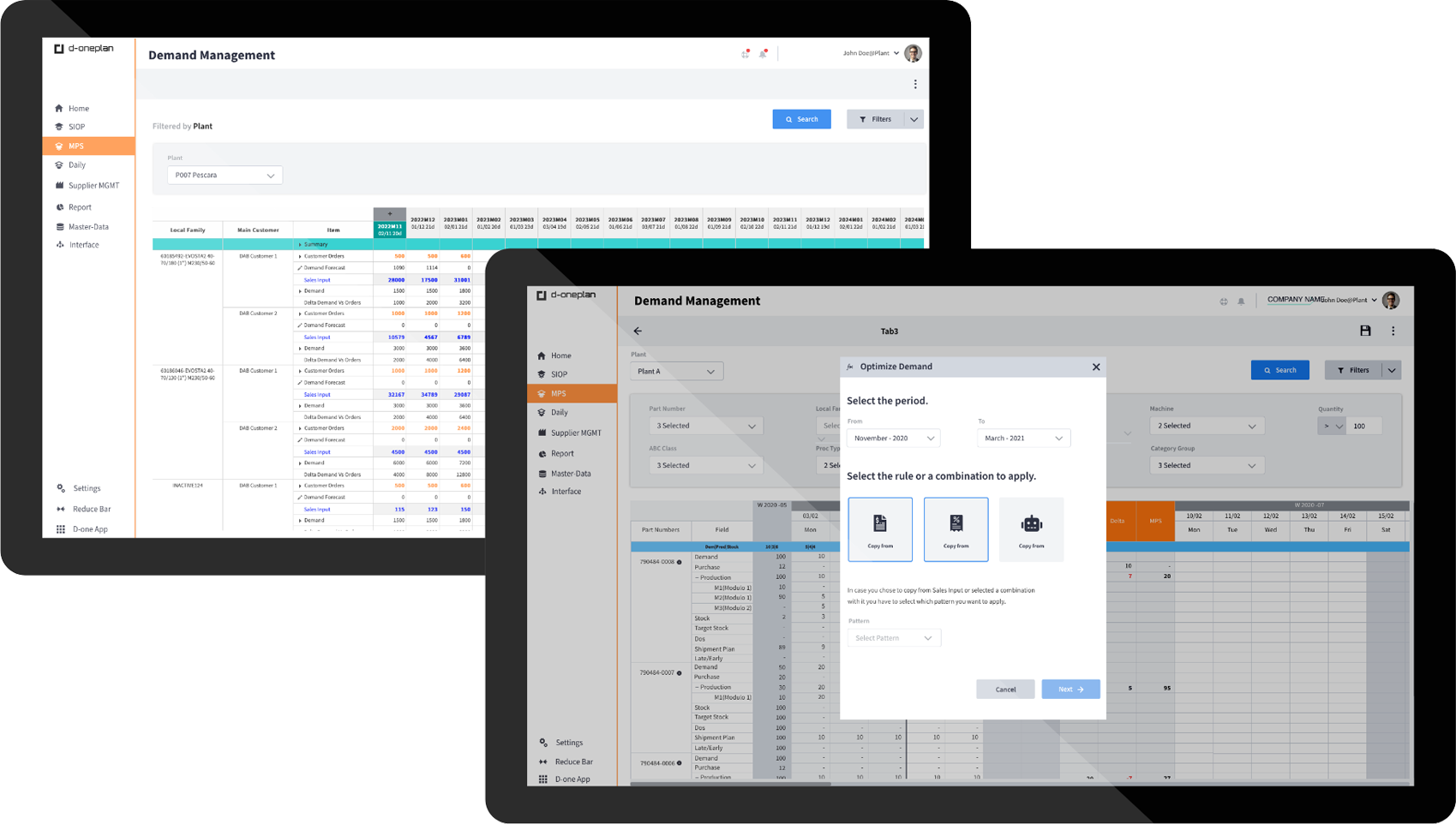

Better
Forecasting

Increased
Profitability

Lower
Inventory

Increased
Service Level
Production and Capacity Planning
Supply planning and optimization (S&OP)
Detailed, robust and optimized supply plans based on the latest demand insights, potential bottleneck forecasts and targeted inventory levels. The machine capacity constrained production plans take sales, inventory and operations data into account and produce reliable, efficient and transparent results in the short and long term.


Business-wide
data integration
transparency

Removes
unnecessary
activities

Better capacity
utilization

Constraints &
machine
capacity
Production and Capacity Planning
Production planning and optimization (MPS)
Concurrently plan and monitor functionality, to quickly and easily manage supply to meet expected demand, while still respecting material and capacity constraints and hitting the inventory targets. Skillfully align supply to stated demand on a weekly or daily basis.
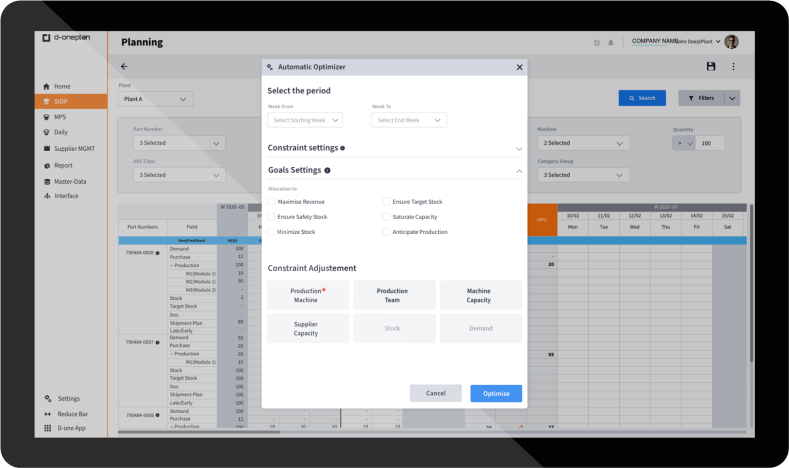

Business-wide
data integration
transparency

Removes
unnecessary
activities

Better capacity
utilization

Constraints &
machine
capacity
Production and Capacity Planning
Inventory and shipment planning
Bult-in optimizer with multiple goals functions to improve inventory and shipment planning. Cycle times will also be enhanced with the added benefit of automatic stock projection to help manage demand and production.
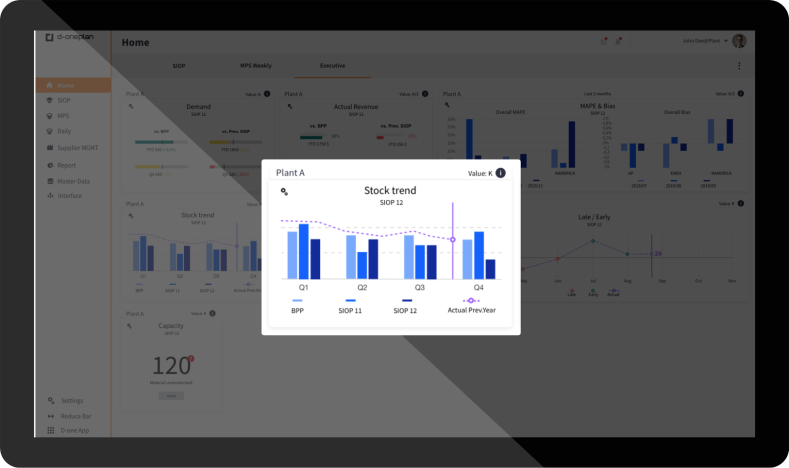

Inventory
Reduction

Improved
cicle times

Automatic Stock
projection
Production and Capacity Planning
Rough-Cut capacity planning
RCCP is a long-term plan capacity planning tool. It’s for balancing required and available capacity. It highlights, tracks and reports potentially critical situations with aging, checks key internal capacity and analyses supplier capacity so it can be better utilized and managed.


Meet the
capacity
requirement

Identify
potential critical
situations

Increase
delivery on time
performance
Production and Capacity Planning
Supplier management analysis
Easily identify and mitigate production issues caused by lack of components from suppliers by providing:
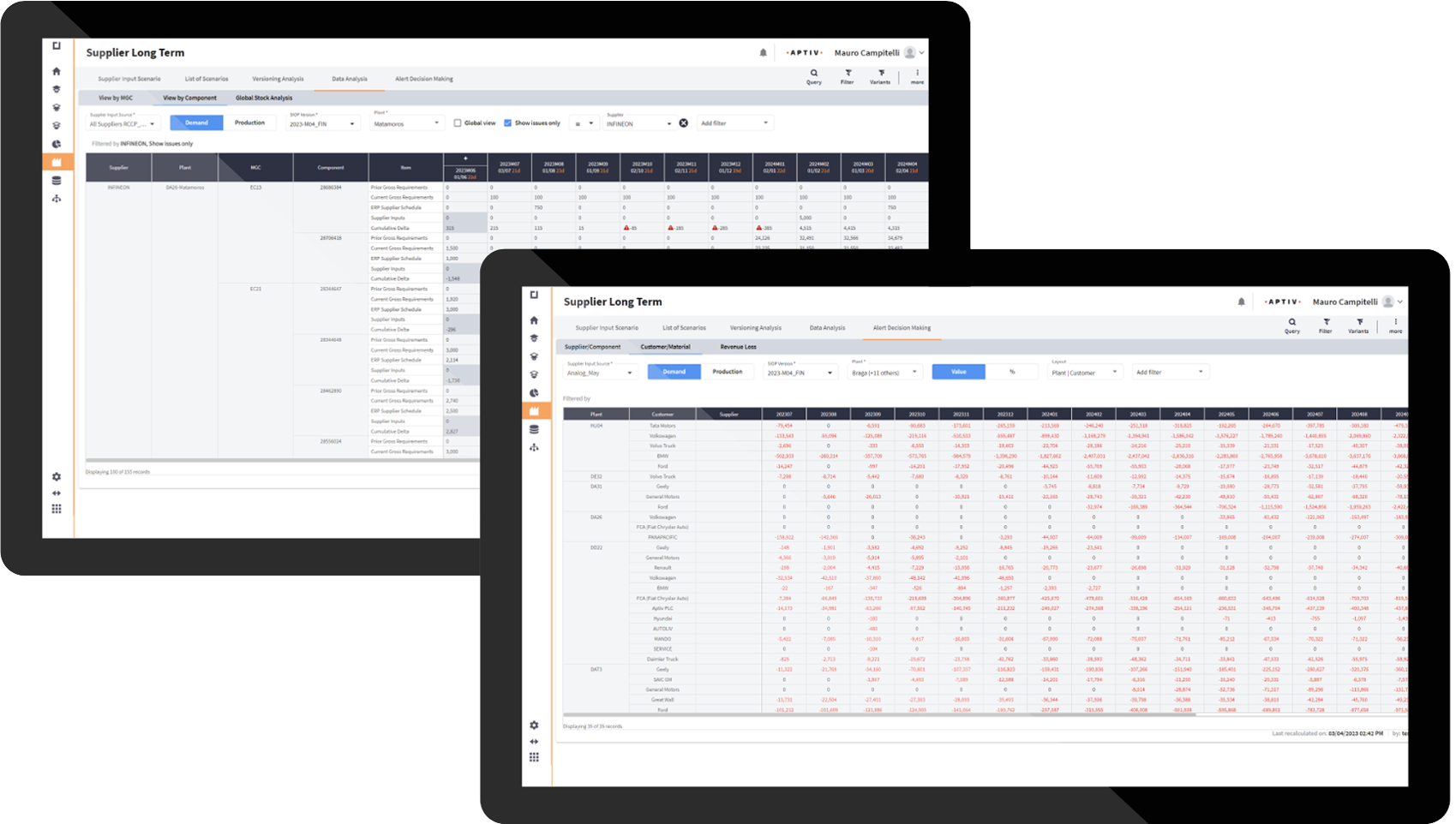

Identify
potential critical
situations.

Increase
delivery on time
performance

Understand
impact to
Customer

Meet the
capacity
requirement
Business Intelligence: Cockpit & Analytics
Forecast accuracy metric report
Accurate sales forecasting helps businesses figure out upcoming issues in their manufacturing and supply chains and course-correct before a problem arises. There are a number of formulas that planners can use to calculate forecast accuracy / forecast error, from the fairly simple to the quite complex. Two of the most common are MAPE and Bias.


Improve
capacity
utilization

Increase
reliability

Increase
accuracy
(MAPE, BIAS)
Business Intelligence: Cockpit & Analytics
Financial Impact, revenue and cost analysis
Linking the S&OP plan to the financial plan opens a whole new set of management opportunities and at the end of the day the Revenue Plan is important to management. Financial analysis plays a key role in producing inputs into Pre-S&OP and Executive S&OP.
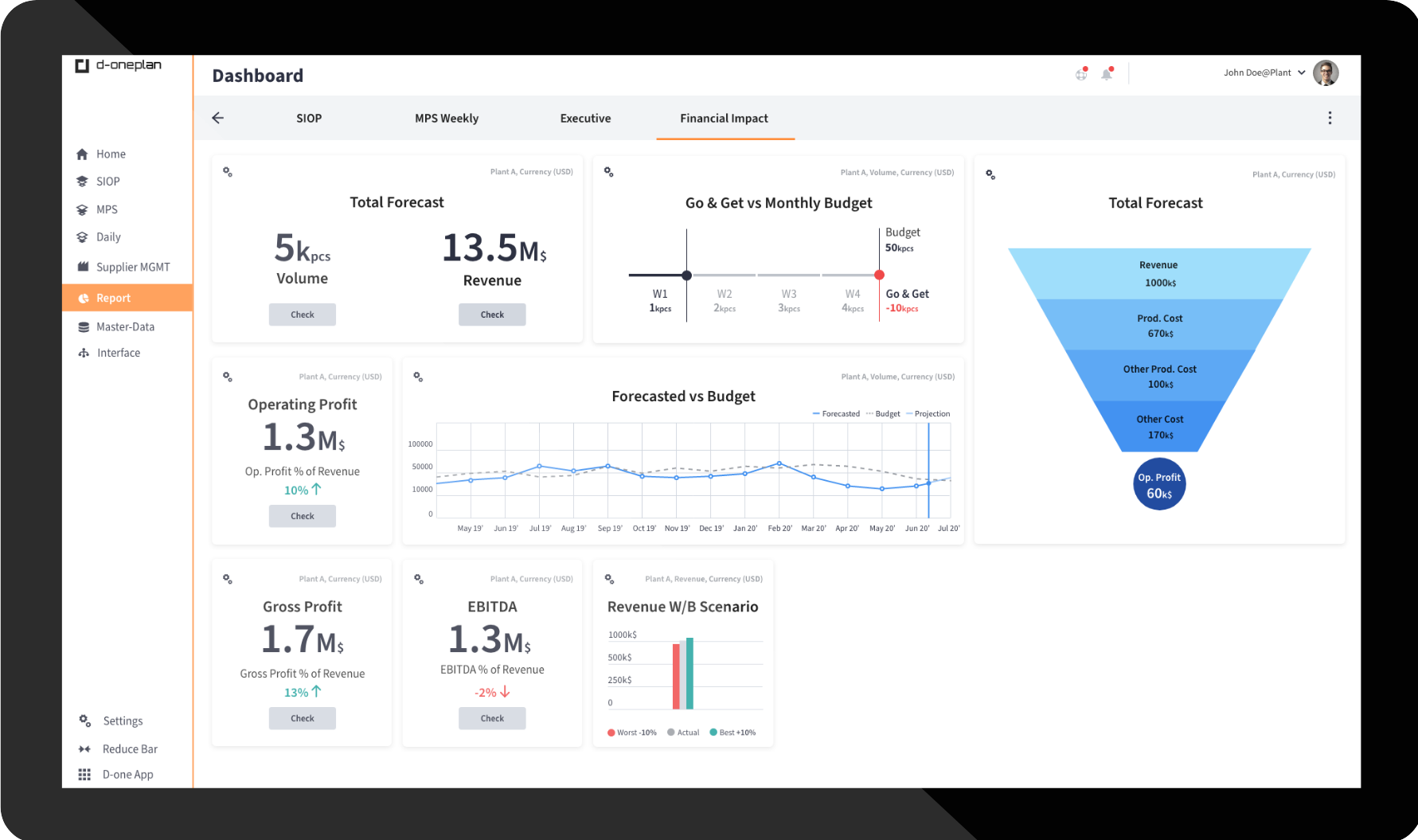

Financials and
cashflow under
control

Sustainable
revenue growth

Monitor risks &
opportunities

Capitalise on
the economies
of scale
Business Intelligence: Cockpit & Analytics
Executive S&OP meeting summary dashboard
Key instrument to navigate the business towards its strategic objectives, facilitating better decision-making on a tactical planning horizon and balances service, cost and inventory for an improved Return On Capital Employed. Financial integration is a major step towards mature S&OP.
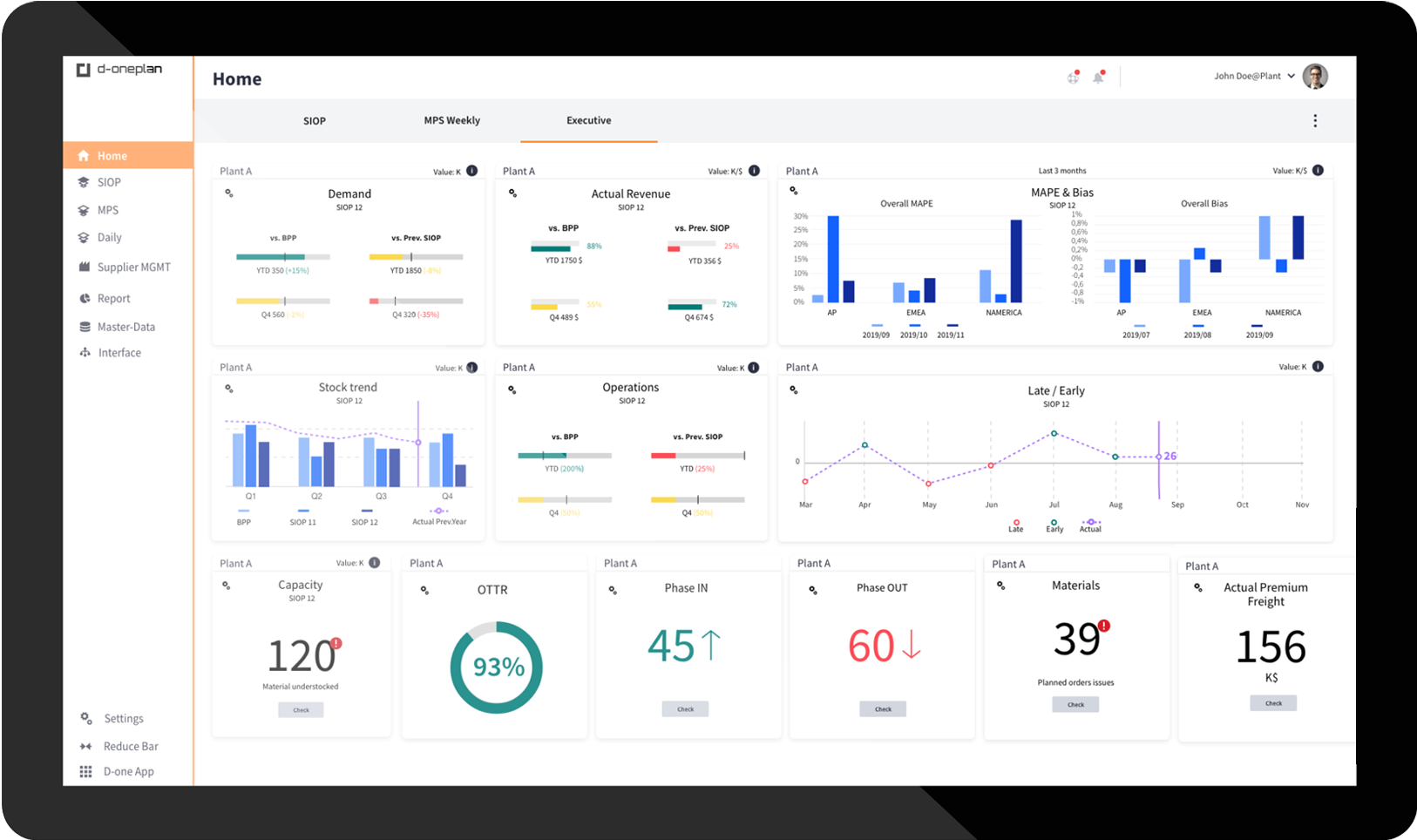

Align financial
and operational
plans

Understand
impact to
Customer

Simulate
multiple
scenarios
Business Intelligence: Cockpit & Analytics
What-if scenario simulation and versioning
Extraordinary easy way to create multiple versions (scenario simulation). When your production plan has been completed and checked, you can compare it against previous plans swiftly. At the end, you can finalize the plan and lunch it for the export to ERP.
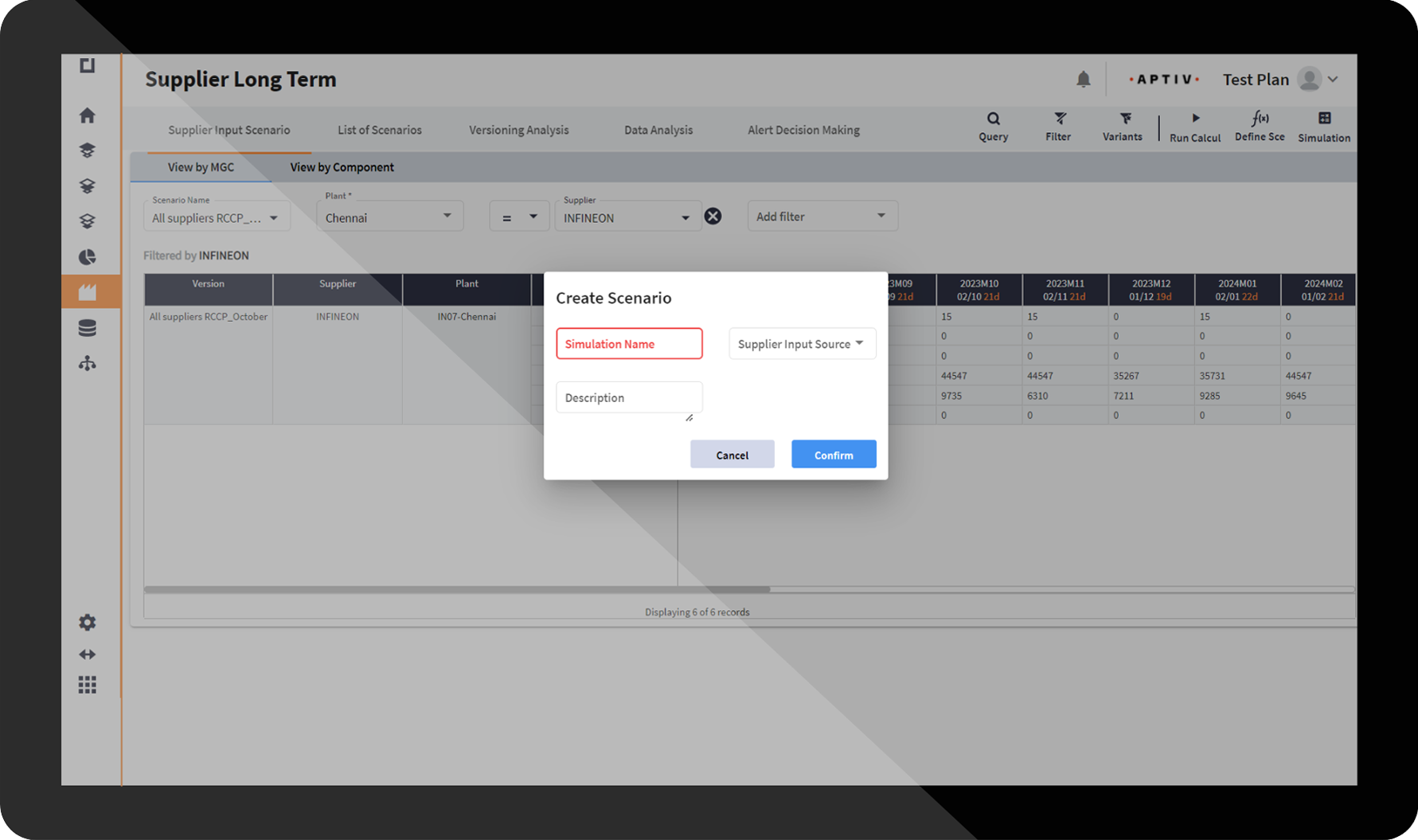

Simulate
multiple
scenarios

Understand
impact to
Customer

Constraints &
capacity
management
Business Intelligence: Cockpit & Analytics
BI KPI Dashboard and Data Visualization
Dashboard is a key instrument to focus on crucial KPI. It’s a combination of metrics & variations that’s used to convey performance as a single view, enabling informed decision-making.
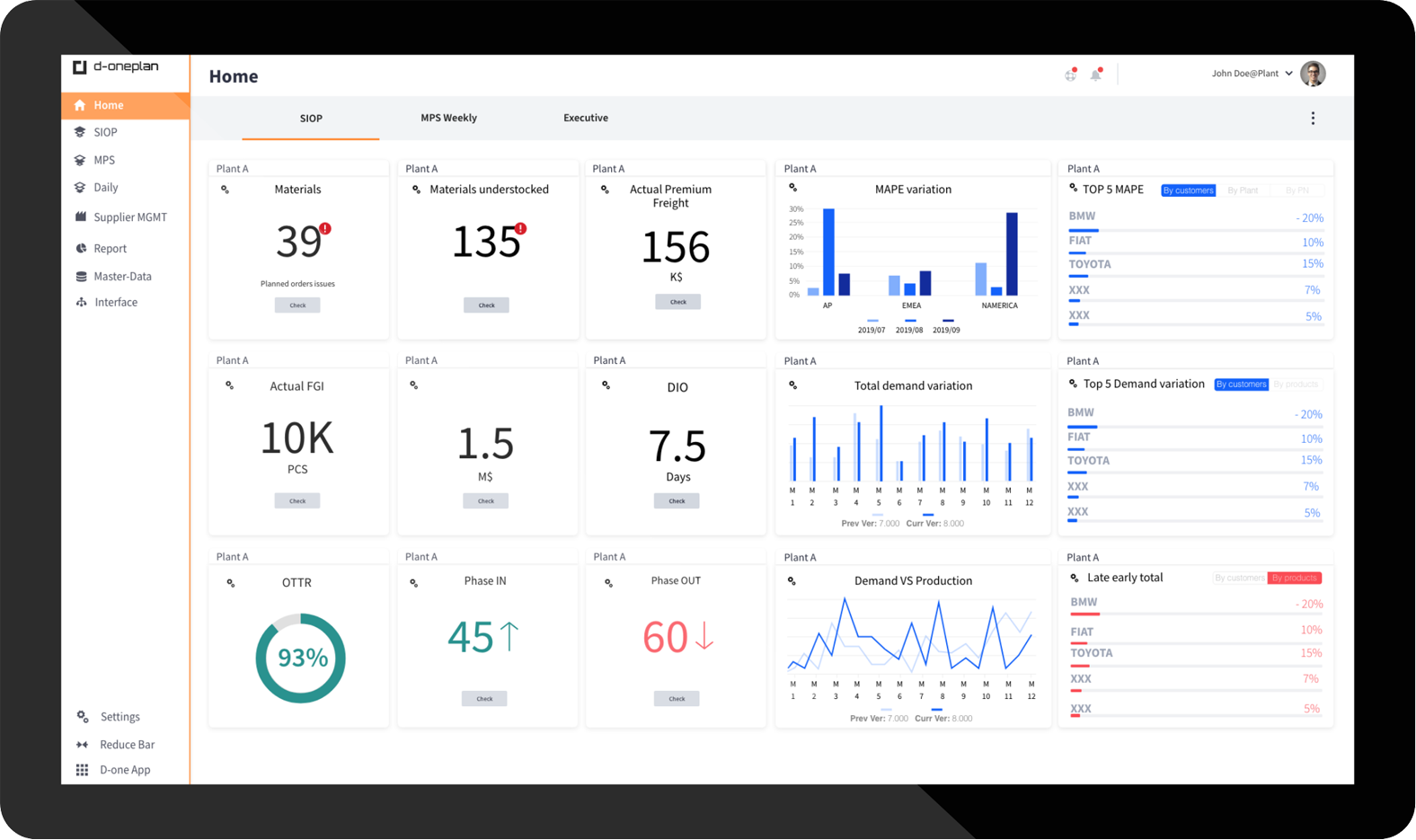
Are you interested in a intelligent
planning system?


